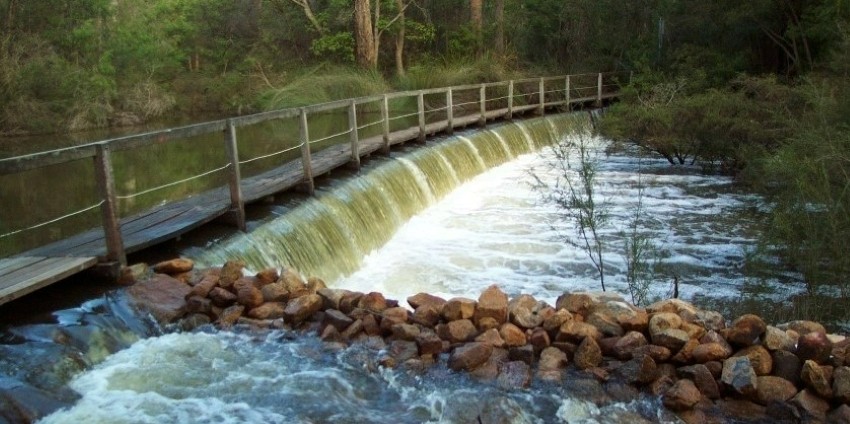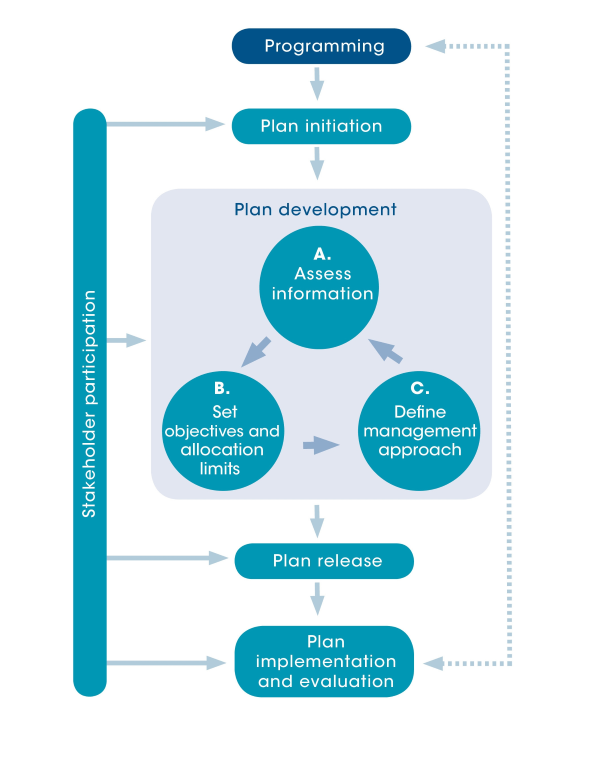Water allocation plans outline how much water can be taken from groundwater and surface water resources, while safeguarding the sustainability of the resource and protecting the water-dependent environment. We set water allocation limits for most of the water resources in Western Australia.
We use water allocation plans to guide individual water licensing decisions so they collectively contribute to economic, social and environmental outcomes for Western Australia.
These plans also inform how information will be collected about water resources, how we will adapt our water management to changing circumstances and how water resources can be best used.
How we develop water allocation plans
Show moreWater allocation planning is one of the ways we manage Western Australia's water resources.
An allocation plan details allocation limits, water for the environment and our approach to managing water resources within a defined plan area. By setting allocation limits, the resource and its environmental, cultural and social values are protected.
Allocation plans also detail what local policies and conditions will be applied to licences issued under the Rights in Water and Irrigation Act 1914.
Water allocation planning:
- provides a consistent, transparent process for water licensing
- ensures the long-term sustainability of a region's water resources
- brings certainty for water users
- protects water resources and water-dependent environments into the future.
Water allocation planning is based on scientific evidence and involves a significant amount of research and stakeholder consultation.
Our water allocation plans are non-statutory but reflect the intent of the National Water Initiative.
We follow a consistent and transparent process for developing allocation plans across Western Australia. This process is briefly outlined in our Water allocation planning brochure and the diagram below, and explained in detail in the Water allocation planning in Western Australia guide.
How we protect our environment
Show moreWe use water allocation plans to protect the diverse range of environments that depend on water resources.
We work with the community and stakeholders to help set environmental water outcomes and optimise our management approach.
Many people value wetlands, rivers, bushland and caves and we all benefit in some way from the ecosystem services they provide. Well-functioning water-dependent ecosystems can provide clean water, healthy fisheries, protection from flooding and storm surges, temperature regulation, and many other social and cultural benefits, including better health and wellbeing.
We use our expertise in the hydrological and ecological sciences to protect environments that depend on our water resources. Our job is to understand the complex interactions between water and ecosystems to work out how much water can be taken without damaging the environment. This understanding forms a crucial part of our water allocation planning.
We also consider the effect water abstraction can have on the environment when making individual water licensing decisions.
The way we manage water for the environment varies across Western Australia according to local conditions and the way water is used. For example, we set operating rules for strategic water supply dams to regulate river flow and set licence conditions that will maintain groundwater levels where groundwater-dependent wetlands are at risk. We also set up monitoring and reporting systems to tell us how the environment is responding to water abstraction and other influences such as climatic variation.
You can read more about how we protect the environment:
Water allocation plans by region
Show moreYou can read about our water allocation plans across Western Australia by region:




